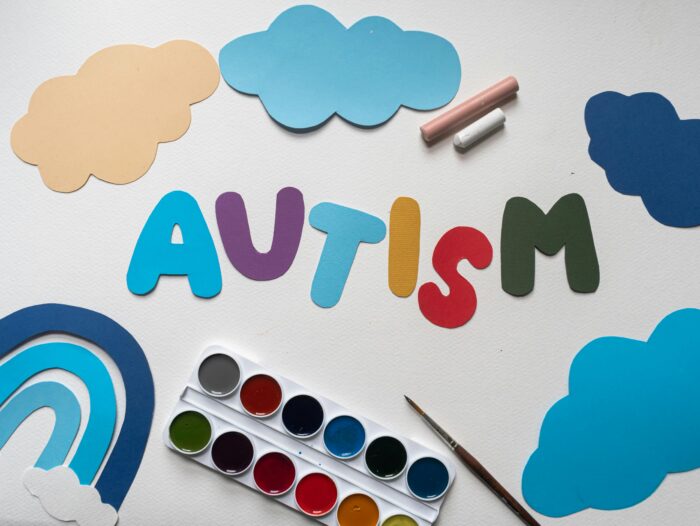The Influence of Very Early Treatment on Kids with Autism: What Moms And Dads Required to Know
The Influence of Very Early Treatment on Kids with Autism: What Moms And Dads Required to Know
Blog Article
Checking Out Autism: Methods for Reliable Communication and Interaction
Efficient communication and interaction with people on the autism range necessitate a comprehensive understanding of their unique needs and choices. Approaches such as using clear language, making use of visual supports, and promoting constant regimens can substantially improve engagement and minimize anxiety. Moreover, identifying the significance of non-verbal hints and shared rate of interests leads the way for purposeful connections. Nonetheless, the ins and outs of these methods disclose further considerations that warrant expedition, particularly in exactly how they can be adjusted to diverse contexts and specific experiences. What might these adaptations appear like in technique?
Recognizing Autism Range Problem
Autism Range Problem (ASD) includes an array of neurodevelopmental conditions characterized by challenges in social interaction, communication, and repeated behaviors. The term "spectrum" shows the varied symptoms and varying degrees of seriousness experienced by individuals with ASD. While some might exhibit significant problems, others might present high-functioning characteristics, enabling better independence in day-to-day live.
The onset of ASD usually happens in early childhood, with signs frequently identifiable by age 2. Very early signs may include postponed speech growth, limited eye contact, and problems in recognizing social signs. Although the specific etiology of ASD stays unclear, study recommends a mix of ecological and hereditary elements plays an essential role in its growth.
People with ASD typically possess one-of-a-kind toughness, such as heightened attention to information and extraordinary memory skills. However, they might fight with comprehending abstract concepts and managing changes to routine. Therefore, interventions and support customized to individual needs are crucial for promoting interaction and social skills. Recognizing the intricacy of ASD is important for promoting recognition, acceptance, and efficient approaches that help with purposeful communications with individuals on the range.

Relevance of Clear Interaction
Effective communication is essential for promoting understanding and link, especially for individuals with Autism Range Disorder (ASD) Clear interaction not just helps with social interactions yet likewise boosts the person's ability to reveal their ideas, requirements, and emotions. For people with ASD, the nuances of language can often be testing; for that reason, making use of simple and unambiguous language is necessary.
Moreover, clear communication helps decrease stress and stress and anxiety that might arise from misunderstandings. When messages are shared in a direct and constant fashion, people with ASD are better equipped to translate details precisely, which can dramatically enhance their social involvement and participation in various setups.
Establishing regimens and making use of visual supports can additionally boost clear interaction. These approaches provide individuals with foreseeable structures that aid comprehension and retention of info. In addition, proactively paying attention and being patient throughout communications promotes an encouraging atmosphere where individuals with ASD feel valued and comprehended.
Inevitably, prioritizing clear communication not only equips people with ASD yet likewise promotes even more purposeful links with their peers, caregivers, and the wider community, paving the method for collective connections and comprehensive communications. - autism
Non-Verbal Interaction Techniques
Interaction prolongs past words, and for individuals with Autism Spectrum Disorder (ASD), non-verbal signs play a significant duty in communications. Non-verbal interaction strategies can include faces, motions, body language, and eye call, every one of which serve as vital parts for communicating intents and feelings.
Recognizing and translating these non-verbal signals can boost interactions with individuals with ASD. For instance, a warm smile or open posture can create a welcoming ambience, motivating involvement. Utilizing aesthetic help-- such as picture Go Here cards or symbols-- can link communication gaps and aid share messages a lot more efficiently.
It is likewise essential to be mindful of individual area, as individuals with ASD may have different convenience levels regarding closeness. Observing their reactions to physical closeness can educate suitable adjustments.

Developing Helpful Environments
Developing a helpful environment is critical for cultivating favorable interactions and boosting the well-being of people with Autism Spectrum Problem (ASD) Such atmospheres can considerably minimize anxiety and create a feeling of security, permitting people to express themselves a lot more freely.
To accomplish this, it is necessary to think about sensory level of sensitivities that individuals with ASD might experience. Modifying the physical space to include soft lights, marginal history noise, and comfy seats can create a soothing environment. In addition, making use of regular routines and clear visual schedules can assist people prepare for shifts and reduce unpredictability, additional promoting convenience.
Social rooms ought to be structured to decrease overwhelming stimulations while providing chances for engagement in favored tasks. Helping with locations marked for silent time can likewise work as a sanctuary during minutes of read tension. Notably, integrating components of choice encourages people, allowing them to work out agency in their setting.

Encouraging Social Communications
Fostering social interactions among individuals with Autism Spectrum Disorder (ASD) requires intentional strategies that prioritize convenience and involvement. Developing foreseeable regimens can assist minimize stress and anxiety, making social setups much more friendly. Creating organized atmospheres with specified functions and obligations allows individuals to engage without the overwhelming stress of unstructured social characteristics.
Integrating interests and staminas into social activities can act as a driver for communication. For example, arranging team activities around shared hobbies or subjects of attraction can assist in all-natural conversations and links. Furthermore, utilizing aesthetic assistances, such as social scripts or photographic timetables, can assist in recognizing social cues and expectations.
Modeling ideal social actions is important - autism. Peers and adults should show reliable interaction methods, consisting of active listening and turn-taking. Role-playing the original source situations can likewise provide a risk-free room for individuals to practice these abilities
Finally, promoting peer connections via comprehensive techniques is important. Encouraging inclusive playdates or group outings can develop opportunities for socializing in a comfortable setting. By executing these caregivers, methods and teachers can substantially improve social communications for individuals with ASD, advertising their overall social development and wellness.
Final Thought
In conclusion, efficient communication and communication approaches are crucial for sustaining individuals with Autism Range Disorder. Eventually, these techniques empower individuals with autism to navigate social landscapes, promoting their total health and allowing the growth of long-term relationships.
Efficient interaction and interaction with individuals on the autism range require a comprehensive understanding of their distinct demands and choices. Clear communication not just assists in social interactions however also enhances the individual's capability to reveal their ideas, requirements, and feelings.Fostering social interactions amongst individuals with Autism Spectrum Condition (ASD) needs intentional strategies that focus on comfort and involvement. By executing these techniques, teachers and caregivers can substantially enhance social communications for individuals with ASD, promoting their total social advancement and wellness.
In verdict, effective communication and interaction techniques are vital for sustaining people with Autism Spectrum Problem.
Report this page